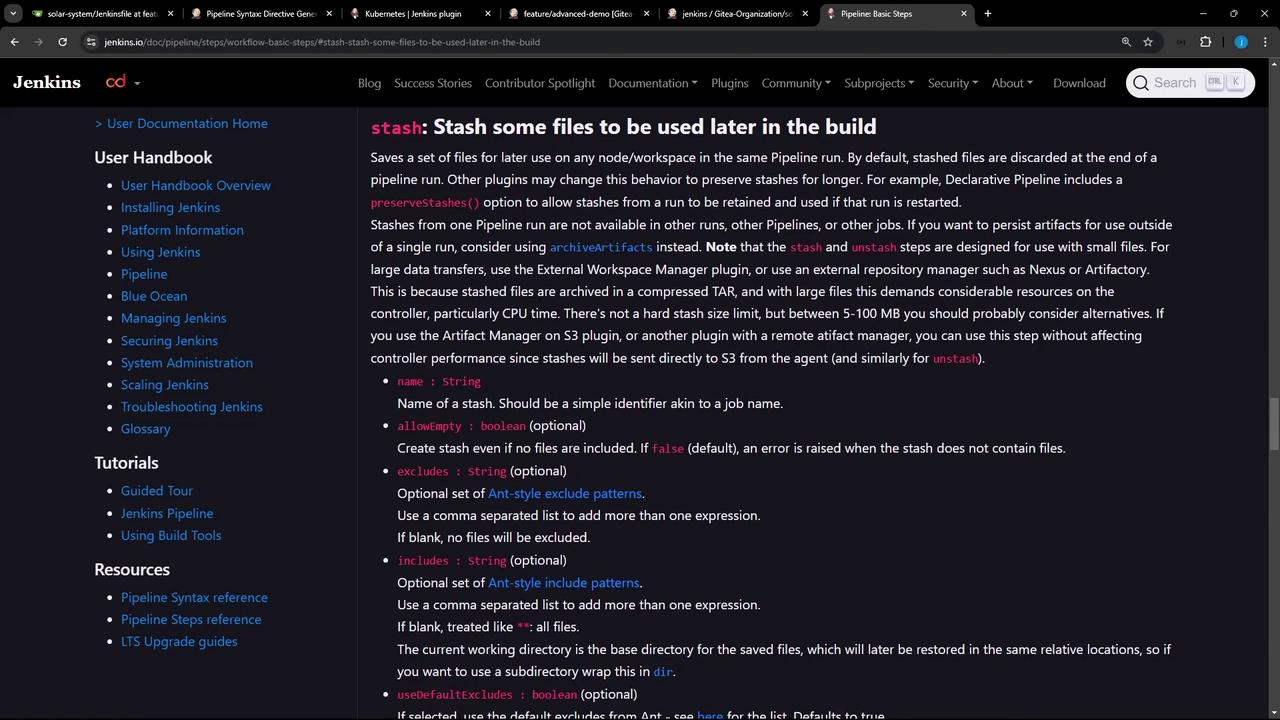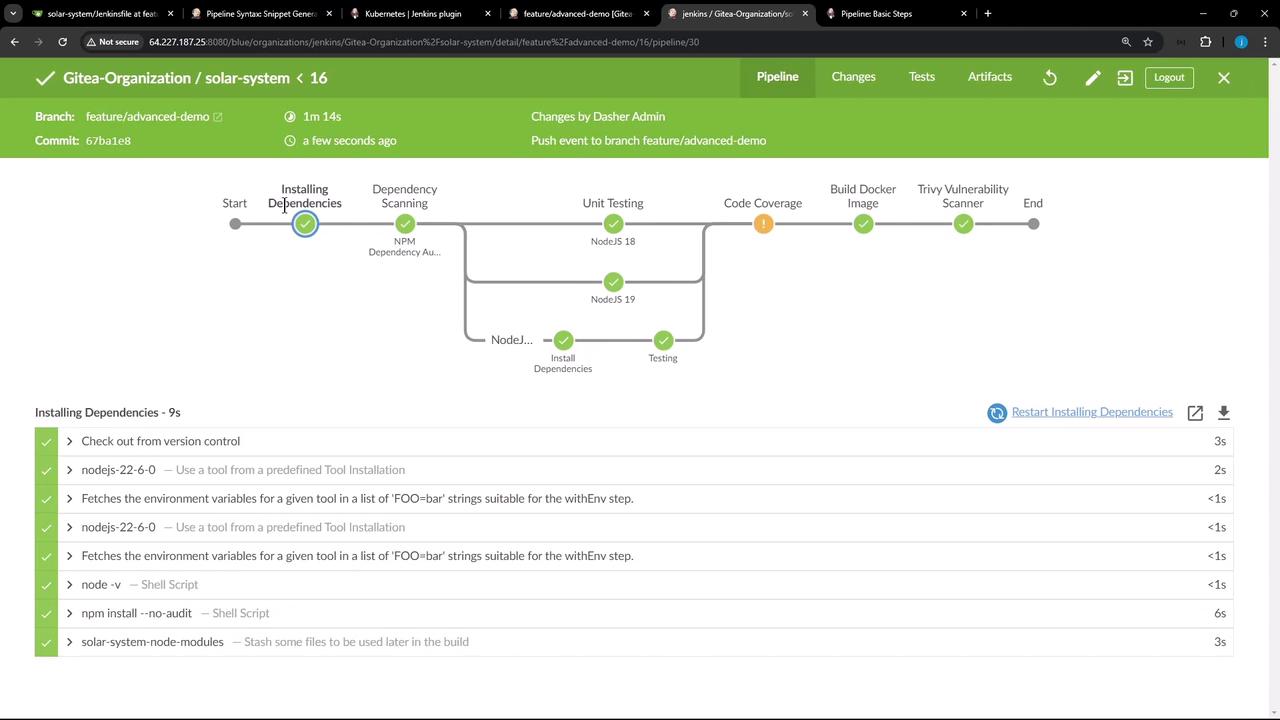Certified Jenkins Engineer
Pipeline Enhancement and Caching
Demo Stash and Unstash
In this guide, we’ll dive into how to leverage the stash and unstash steps to share files between stages. By stashing build artifacts or dependencies once, you can retrieve them later—on any agent or node—without rerunning expensive installation steps.

Why Use stash and unstash?
- Performance: Avoid duplicate work, such as reinstalling dependencies in each stage.
- Consistency: Ensure the same set of files is used across multiple agents.
- Resilience: Reduce errors from partial or conflicting installs.
Warning
By default, stashes are discarded when the pipeline finishes. To retain stashes across pipeline restarts, enable preserveStashes() in a Declarative Pipeline or use plugins that persist stash data.
Common Error: Reinstalling Node Modules
Rerunning npm install in every stage can trigger errors like this:
npm install --no-audit --cache .
npm ERR! code ENOTEMPTY
npm ERR! syscall rename
npm ERR! path /var/lib/jenkins/workspace/my-project/node_modules/chai
npm ERR! dest /var/lib/jenkins/workspace/my-project/node_modules/.chai-XYZ
npm ERR! errno -39
npm ERR! ENOTEMPTY: directory not empty, rename '/var/lib/jenkins/workspace/my-project/node_modules/chai' -> '/var/lib/jenkins/workspace/my-project/node_modules/.chai-XYZ'
Instead, stash the node_modules/ folder once and then unstash it in all subsequent stages.
Stash vs. Unstash: At a Glance
| Step | Action | Example |
|---|---|---|
| stash | Save files for later use | stash includes: 'node_modules/', name: 'npm-deps' |
| unstash | Retrieve previously stashed files | unstash 'npm-deps' |
Generating the stash Snippet
Use the Pipeline Syntax (Snippet Generator) in Jenkins to build your stash step interactively.

Example output:
stash includes: 'node_modules/', name: 'solar-system-node-modules'
Declarative Pipeline Example
Below is a sample Declarative Jenkinsfile that:
- Installs Node.js dependencies
- Stashes them
- Restores them in later stages
pipeline {
agent any
options {
preserveStashes() // Keep stashes if the build is restarted
}
environment {
MONGO_DB_CREDS = credentials('mongo-db-credentials')
SONAR_SCANNER_HOME = tool('sonarqube-scanner-610')
GITEA_TOKEN = credentials('gitea-api-token')
}
stages {
stage('Install Dependencies') {
options { retry(2); timestamps() }
steps {
sh 'node -v'
sh 'npm install --no-audit'
stash includes: 'node_modules/', name: 'solar-system-node-modules'
}
}
stage('Dependency Scanning') {
steps {
unstash 'solar-system-node-modules'
// e.g., run vulnerability scanner
}
}
stage('Unit Testing') {
steps {
unstash 'solar-system-node-modules'
sh 'npm test'
}
}
// Additional stages…
}
}
After pushing this Jenkinsfile, check the build logs:
[2024-11-10T11:12:47.1212] Stashed 4898 file(s)

As demonstrated, stashing node_modules once and unstashing it in multiple stages—possibly on different agents—saves time, reduces redundant work, and prevents errors from repeated installs.
Links and References
Watch Video
Watch video content